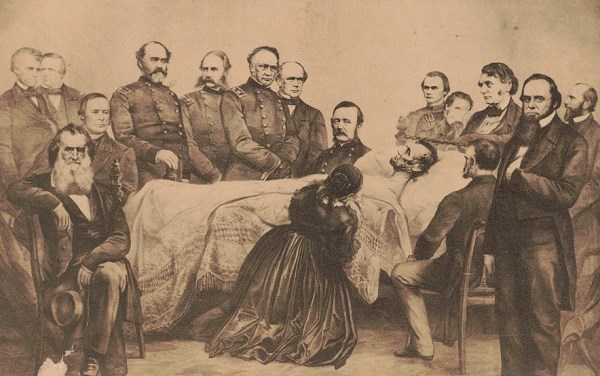Authors:
Historic Era: Era 5: Civil War and Reconstruction (1850-1877)
Historic Theme:
Subject:
February/March 1995 | Volume 46, Issue 1


Authors:
Historic Era: Era 5: Civil War and Reconstruction (1850-1877)
Historic Theme:
Subject:
February/March 1995 | Volume 46, Issue 1

Threat of assassination may seem the greatest risk a president of the United States must take upon entering office, but history suggests that, until recently, a Chief Executive’s life was threatened more by his post-assault medical treatment than by his assassin’s bullet. There have been at least eleven attempts on the lives of American presidents, four of them successful. John F. Kennedy was shot with a high-velocity bullet that destroyed his brainstem, an instantly fatal injury that rendered any medical treatment useless. The three other victims did not immediately suffer fatal wounds.
Both James Garfield and William McKinley received sub-standard medical care after being shot, which probably contributed more to their deaths than the wounds themselves. Garfield, who was shot in 1881, died of sepsis, an infection that may result from any wound, but, in his case, most likely resulted from a series of unsterile wound probes by his doctors. It is curious that, while Garfield’s doctors took every other antiseptic measure throughout the case, they explored the wound with naked fingers 14 times, repeatedly engaging in a practice thoroughly condemned by medical texts of the day.
McKinley’s death 20 years later also appears to have been the result of his doctors’ poor judgment. The surgeon who attended him, Dr. Mathew Mann, was an obstetrician-gynecologist who had never operated on a gunshot victim and should have declared himself unqualified. Dr. Herman Mynter, the first surgeon on the scene, was responsible for the hasty appointment of Dr. Mann. Mynter decided that the surgery must be performed as soon as possible, and Mann lived nearby. However, the time it actually took to begin operating would have been sufficient to bring the wounded president to one of the most advanced medical facilities in the country, the Buffalo General Hospital, which owned one of the first X-ray machines and employed doctors who were well-qualified to perform the procedure. Instead, McKinley was taken to an ill-equipped, unlit room in the Exposition Hospital and, like Garfield, he died of sepsis.
After having discovered the quality of medical care given to these two American presidents, I thought it reasonable to investigate the care of their predecessor, Abraham Lincoln. Many details of the event that took place on the night he was shot are obscured by misleading and contradictory accounts, but a consensus of various sources maintains certain facts.
On the evening of April 14, 1865, five days after General Lee surrendered his exhausted army, Abraham Lincoln attended a performance of Our American Cousin at Ford’s Theater in Washington. He arrived late, at approximately 8:15 P.M., and the play was briefly halted to welcome his entrance. Lincoln was accompanied to the President’s box with his wife and his guests, Miss Clara Harris